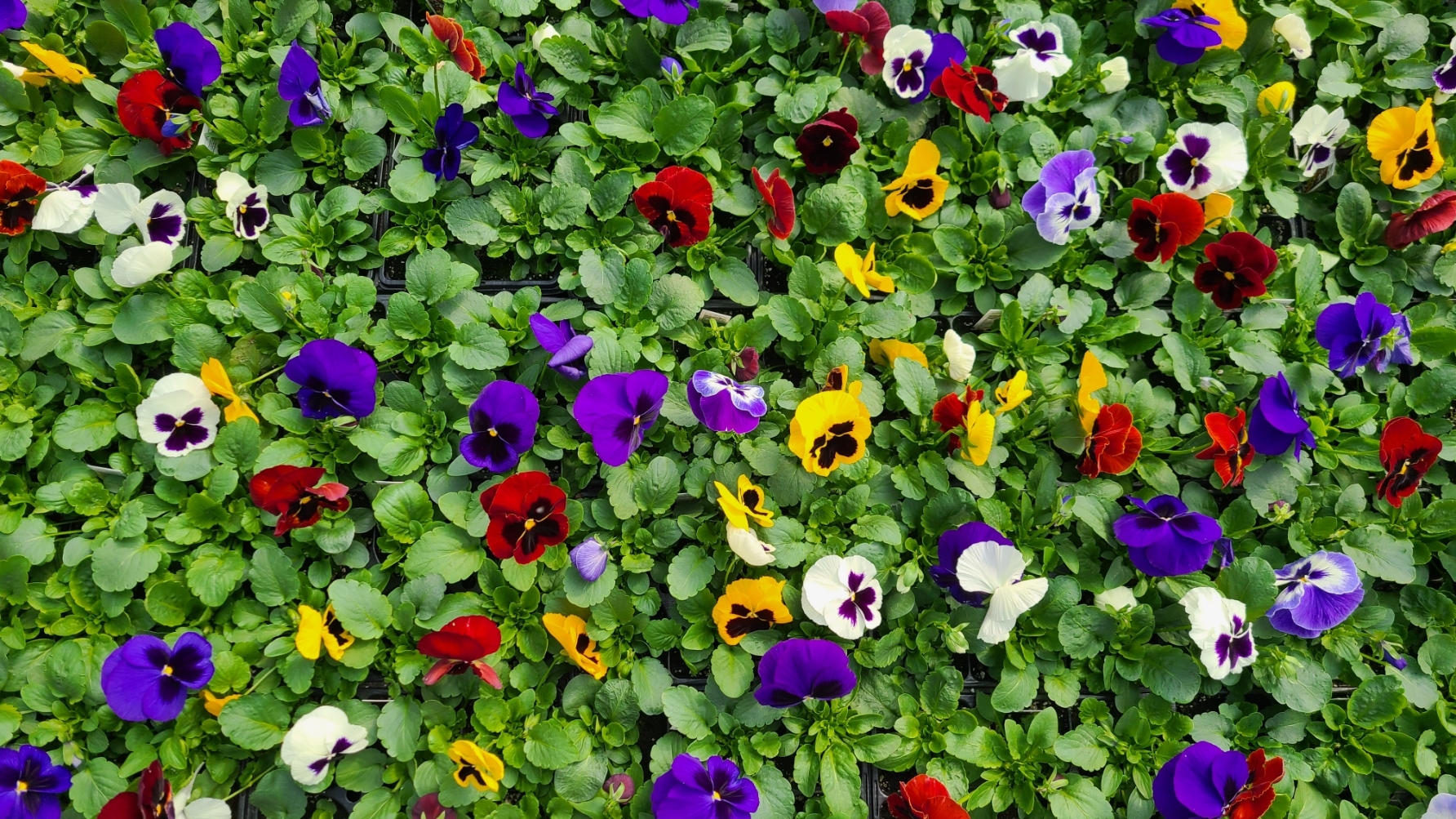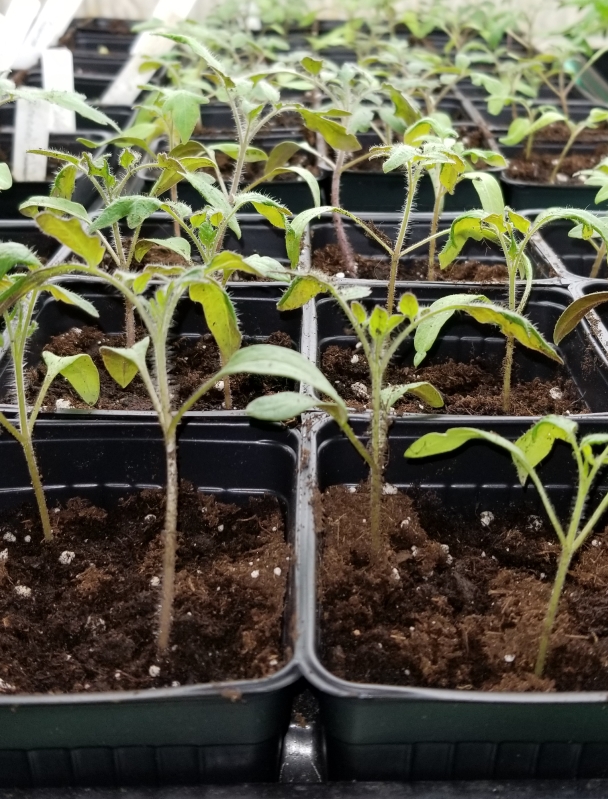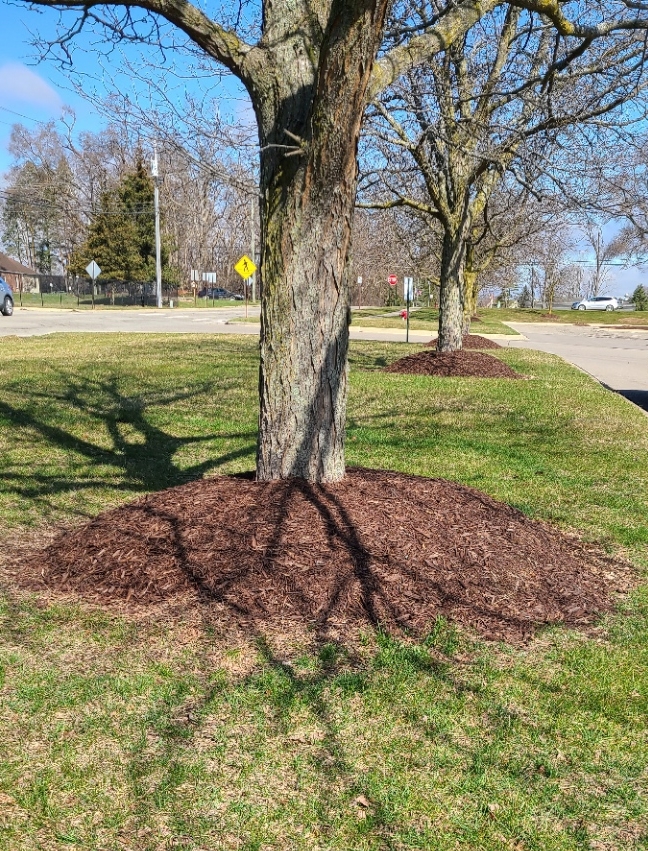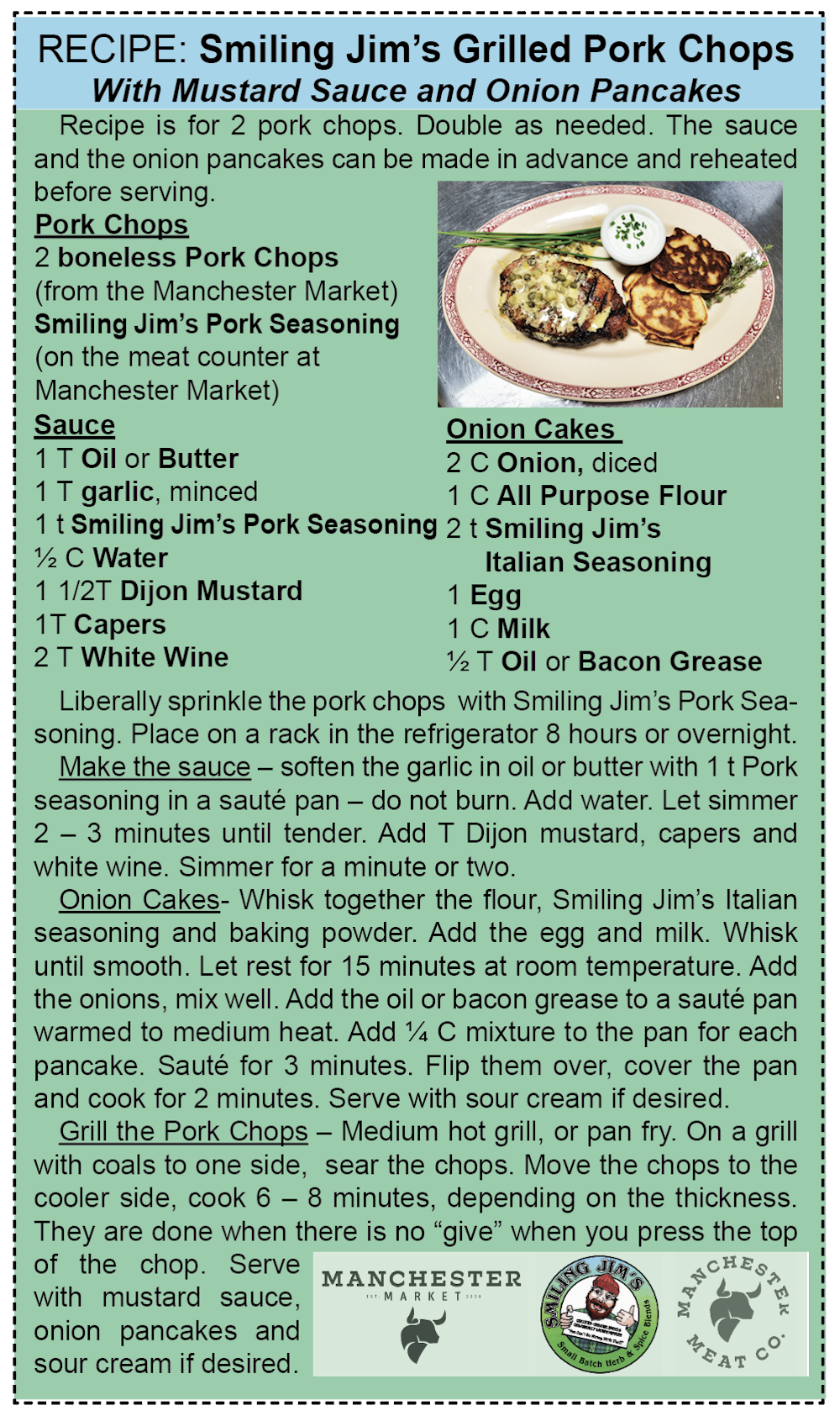April 2024 Gardening Advice

Pansies
submitted by Jennifer Fairfield, Garden Mill
If you’ve been into The Garden Mill recently, you’ve probably seen lots of boxes and a bit of chaos as we have been trying to receive in and put away all of the spring merchandise that has been arriving daily. Please excuse the mess a little longer, as we have a few more big deliveries to get in, but we promise it will all be worth it!
We’ve been getting in some great new items, along with the old favorites you’ve come to rely on from us, and we have been seeing something that we’re sure will make everyone happy in these days when it seems like prices are going up on everything: while there have been a handful of increases, most of our prices are staying the same so far this year, and a few have actually gone down! I can’t think of better news, unless it’s that the weather people are going to guarantee that we will have absolutely perfect gardening weather all season long.
The weather in the last week or so has been a reminder that Spring in Michigan can be, shall we say, “interesting?” Going from 70’s to snow in a matter of days shouldn’t surprise any of us who have lived here for even just a few years, but it still always seems to catch us by surprise when it happens. We’re not done with the “interesting” weather yet, so don’t get too far ahead of yourself in your garden just yet, but don’t let it stop you from getting some things done either.
Indoor and Outdoor Gardening Tasks:
- If you are starting plants from seed, start eggplant, pepper, and tomato seeds indoors now, so they will be ready to put out in your garden in about eight weeks. These heat-loving plants are some of the last to go out in the garden, once all chance of frost has passed and nighttime temperatures are consistently above 50°, which is usually around Memorial Day. Putting them out too soon can slow down their growth, so you really don’t gain anything by getting them in too early.
- Before starting to plant outdoors, test your soil. Your soil conditions change over time, so it’s best to do this every year. Knowing what your soil is lacking makes giving it what it needs to support good plant growth so much easier. It’s also a way to be sure that you aren’t spending money unnecessarily on fertilizers you don’t need. You can do a simple soil test at home, or get a more in-depth analysis from the Michigan State University Extension Service.
- Turn your compost pile to ensure that everything is getting enough oxygen. All the wet weather we have had can cause compost to become compressed, depleting oxygen at the center and bottom of the pile. Turning the pile will help to “fluff” the material, allowing more oxygen to get to all areas of the pile, and getting more oxygen to the material will help it break down more quickly. Need more information on composting? Check out Michigan State University’s Smart Gardening tips for composting.
- Check to make sure you have what you need for the season. Replace or repair gloves (on sale this month at The Garden Mill!) and garden hoses that have holes, as well as garden supports and stakes that have broken or worn down. Mend or replace fences that leave your plants vulnerable to deer and rabbits. Make sure your power equipment is in good working order and that pruning and cutting tools are sharp.
- If you covered perennials with mulch for the winter, as it starts to warm up, pull the mulch away from plants that are starting to poke up out of the ground to help the soil warm up more quickly and reduce the chance of mold. Add compost to the soil around your plants after you have removed mulch. This helps improve the soil’s structure and adds nutrients.
- Wait to add new mulch to your planting beds, trees, and shrubs until the soil has warmed up fully – usually after Mother’s Day. Putting down new mulch too soon can keep the soil from warming up and slow your plants’ growth and flowering. Spring mulching should be done in a thinner layer than fall mulching – just a couple of inches is perfect for helping to suppress weeds and keep the soil temperature and moisture consistent. Avoid mounding mulch around tree trunks – and don’t let your landscapers do it! “Mulch volcanoes,” such as those shown here, are among the worst things you can do for trees, as it causes damage to bark, can kill roots, and leads to roots girdling (strangling) the tree trunk. A 2”-3” even layer of mulch spread around the tree, starting from 2” away from the trunk, is just what your tree needs. The University of Nebraska Extension Service has more details about the ill effects of bad mulching practices and advice on how to do it right.
- All the wind we saw in March has likely left debris in your yard from broken branches. Fortunately, sunny April days are perfect for getting out and cleaning it up before mowing season begins. If you can, pile the debris somewhere on your property that is out of the way, to provide habitat for creatures, including some bees, butterflies, and other beneficial insects. Insects we don’t necessarily think of as beneficial will also use the dead wood, providing food sources for birds and other creatures.
- Early April is the time to apply weed preventer to your lawn. Weed preventers help keep the seeds of dandelion, crab grass, and other weeds from putting down roots when they germinate. It won’t kill perennial weeds that already exist in your lawn but will keep new seeds from taking hold. If you’re looking for something to kill existing weeds, I highly recommend Captain Jack’s Dead Weed Brew (the re-branded same formula of Bonide’s Burn Out Formula II). It takes a few applications to truly kill a perennial weed permanently, but it does the best job I’ve found of any organic weed killer around!
- Wait until daytime temperatures are consistently in the 50’s to cut back grasses and most perennials that you left standing over the winter. Waiting for warmer temps will give the beneficial insects that have spent the winter in the hollow stems and on the leaves of your plants a chance to wake up. The Xerces Society has more details about when to do spring clean-up so you do the least harm.
- Cut back semi-woody and woody perennials around the end of the month. Decide how much you want to trim based on where you see new growth, and how you want the plant to appear. For a more “shrubby” appearance, cut them back to about 6” from the ground so that they will branch out more. If you want a taller plant, just trim branches to help get the shape you are looking for. Semi-woody perennials are ones that form woody stems, but aren’t as substantial as true shrubs or trees, and include Russian sage, lavender, and some thymes.
- Once your garden’s soil is workable, it’s time to start planting cool-season crops, such as pea, lettuce, and spinach seeds. Radishes and carrots like slightly warmer soil, as do cabbage, kale, broccoli, and cauliflower transplants, and onion sets. The best way to know when to plant anything is by checking the soil temperature. All plants thrive at particular temperatures or range of temperatures. If you plant too soon, seeds will more likely rot before they can germinate, and transplants can end up being stunted and not produce well. Use a soil thermometer to make sure that your garden is ready for planting. The University of California’s Extension Service offers a great chart with soil temperature ranges for seed germination. The MSU Extension Service has more tips on when to plant both seeds and transplants.
- Pansies and primrose can also go out now, but keep row covers handy – even though these are pretty hardy plants, temperature dips below freezing can cause some damage to the new growth on these plants still. Row covers can help protect your plants from frost and freeze by keeping the warmth of the soil around the plants.
- Most annual flower seeds should not be planted until the soil temperature is at least 65° to 70°, but sweet pea seeds can be planted outdoors when soil temperatures have reached 50° and bachelor’s buttons and calendula are good to plant at soil temps of 60°.
- Towards the end of the month, divide summer-blooming perennials that you didn’t get to in the fall (you can divide spring-bloomers, but doing so may meant that they don’t bloom this spring).
- Plant dormant trees and shrubs once the soil can be worked. The Arbor Day foundation offers in-depth information for planting various types of trees to give them the best chance of thriving.
For the Birds:
- If you don’t have bird houses up yet, get them up now. Bluebirds, swallows, chickadees, wrens, kestrels, and many woodpeckers and owls will use nesting boxes in your yard. If you have a large pond or other wetlands on your property, you might attract wood ducks, mergansers, and other waterfowl with a nesting box. If you’re not sure what kinds of birds you might be able to attract to your yard, or what type of nest box the kind of bird you want to attract likes, the Cornell Lab of Ornithology’s interactive All About Bird Houses can help you figure it all out. They offer free downloadable nesting box plans, but also give lots of details about the type of boxes different birds prefer, where to put the box, and when to expect the birds to be nesting.
- Check existing bird houses before cleaning them out to make sure they aren’t already occupied. If the nesting materials in the box look at all new and fresh, leave them –it’s an indication you already have tenants. If the materials look old, clean them out to give the birds a fresh start.
- Another way to help birds during nesting season is to provide nesting materials for your birds. Just be sure you know what is and isn’t safe for the birds, as some things can be quite dangerous. Check out the Cornell Lab of Ornithology’s Do’s and Don’ts of providing nesting materials.
- If you are wondering when hummingbirds will start arriving in our area, check out Hummingbird Central’s website that tracks their migration. Right now, they are still a bit south of us, but it won’t be too long before we start seeing them at our feeders, and orioles should be showing up at about the same time. Make sure your feeders are ready for them – check for cracks and replace them if needed. With warmer temperatures, put your feeders out during the day to help early arrivers find food. If the temps dip below freezing at night, be sure to bring the feeders indoors to prevent cracking.

Tomato seedlings

Mulch volcano








You must be logged in to post a comment Login